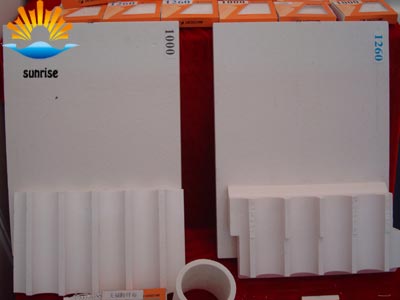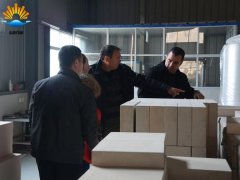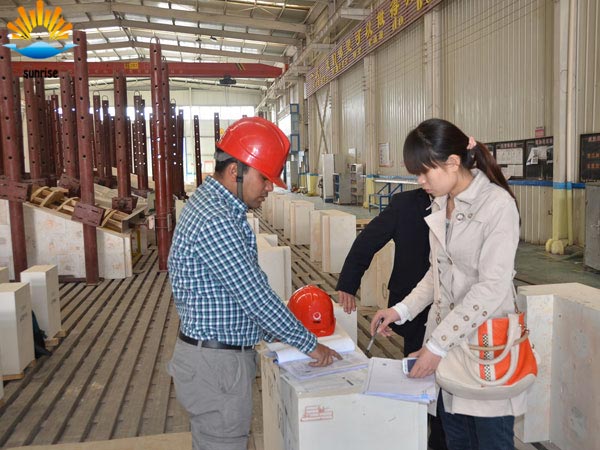Glass furnace refractory bricks may cause glass defects
Date:2017-12-26 09:28 From:Zhengzhou Sunrise Refractory Author:sunrise
Refractory materials for glass furnaces shall be selected and formulated according to the operating environment (temperature, atmosphere, composition and status of raw materials, fuel, etc.) of the furnace and the cause of damage of the refractory materials. Glass kiln refractory bricks, refractory bricks produced by the glass defects may have the following three kinds:
1, stones
Glass kiln firebrick larger particles fall into the glass melt can not be completely dissolved by the melt, it will appear in the glass, "stones." The heaviest particles will settle to the bottom. Soluble substances such as ZrO2 can also be dispersed into small particles Li does not cause harm.
The alkali in the glass will form feldspar material with the refractory bricks containing alumina. A flake falls off due to the difference in thermal expansion. Shedding and then generate a new sheet caused harm. Ramming material in the unsintered solid particles may also enter the glass and the formation of stones.
2, bubbles
All organic matter attached to the surface of firebricks will be incinerated to generate bubbles. Some inorganic building materials also tend to bubble at the beginning. In addition, the air exhausted from the holes in the firebrick can also cause air bubbles. Carbonaceous impurities are always the source of bubbles.
Metallic iron itself has no propensity to generate bubbles, and the carbon contained therein tends to have this tendency. Redox compounds also have bubbles due to changes in the oxidation conditions in the melt. Zirconium brick in the early use of the bubble also tend to produce. But after the effect of alkali in the glass improves the quality of the bubbles, bubbles are no longer produced.
3, indirectly formed defects
The alkali in the glass and the Al2O3-containing material bind to feldspathic materials. In a certain temperature range this material can not be completely dissolved leaving a "stone." KZ-brick and the role is similar. Alumina may dissolve or semi-dissolve leaving ZrO2 "stone." Aggressive components of the glass may dissolve the SiO2 in the zircon article leaving ZrO2 stone. If the particles are large enough, stones will appear in the glass. Eroded grid tiles will also produce the above particles. The combustion air, as it passes through the latticework, may be caused to blow into the melt from the part of the brickwork, the part of the firebrick which has been broken down, or their composition. Stones "formed by the upper structure of the kiln or Xuanding fire bricks may also fall down the formation of stones.


Send an Inquiry
E-mail : sales@sunriserefr.com
Phone : +86-371-63838939 / Fax:+86-371-63835539
Company Address : No.36 Fengchan Road Of Zhengzhou, Henan, China (Mainland)

If you have any needs our help or are interested in our products, you can click online advisorychat with us online, or call our customer service telephone: 0086-0371-63838939. We will sincerely serve for you!
Product Category
- Fused Cast AZS
- Fused Cast AZS Block
- Fused Cast Skid Rail Block
- Fused Cast High Zirconia Block
- Fused Cast AZS Block
- Fiber Products
- Insulation Series Brick
- Fireclay Brick
- High Alumina Brick
- Corundum Brick
- Sillimanite Brick
- Mullite Brick
- Zircon Mullite Brick
- Zircon Brick
- Magnesia Brick
- Silica Brick
- Fused Cast Alumina Block
- Glass Mould Brick
Refractory Knowledge
moreCase

UAE to our factory inspection bri
...

Venezuela customer AZS fused bric
Venezuela customer AZS fused float glass furnace br...





